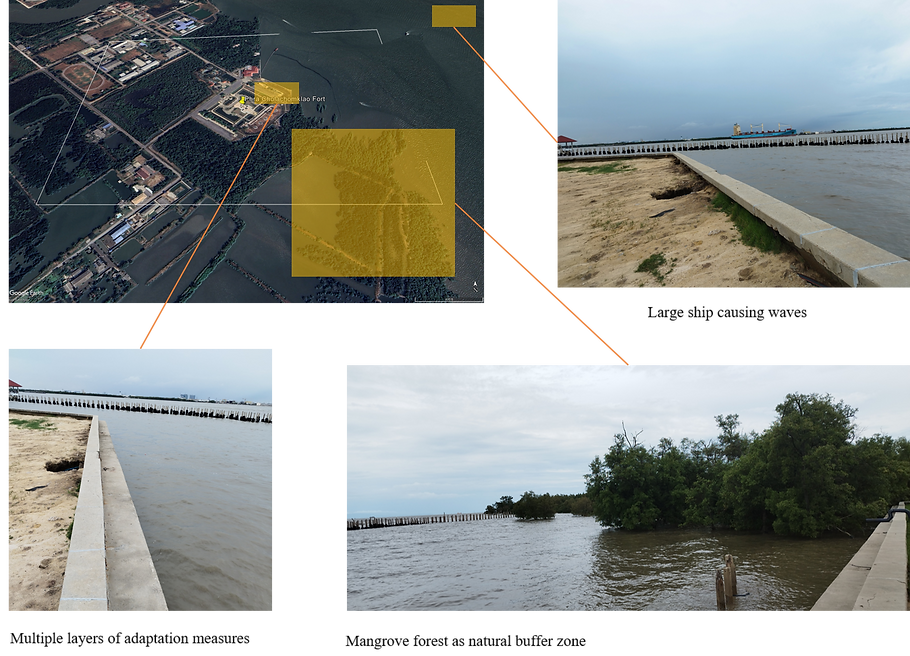
ReTrEAT Cities

CASE STUDY 3: BANG KHUN THIAN NAVY MUSEUM
The Bang Khun Thian Navy Museum, housed in a military station, provides a unique combination of educational and recreational opportunities (Figure 21). This famous tourist location offers a range of amenities, such as food courts, playgrounds, jogging paths, and a battleship exhibit. The facility is well-equipped and located at a higher height, making it more resistant to the problems posed by rising sea levels. However, the region must continue to create infrastructure to successfully address these environmental changes.
During our field tour, it became clear that the Bang Khun Thian Navy Museum is an important nexus for communicating daily sea level height information to the local population. This government infrastructure is critical for coastal monitoring and is outfitted with cutting-edge technology for precisely measuring sea level fluctuations. The museum's elevated location provides a strategic advantage, making it less vulnerable to flooding and erosion than adjacent regions.
One prominent adaptation measure noticed at the site is the use of numerous protective layers to resist erosion. The museum uses a blend of man-made and natural solutions, such as mangroves, for coastal security. Mangroves are noted for their ability to maintain shorelines, reduce wave impact, and encourage sediment deposition, making them an effective and long-term means of coastal protection. Furthermore, the museum has invested in strengthened embankments and seawalls to provide additional protection against tidal surges and storms.

Figure: Key Findings from Bang Khun Thian Navy Museum (Source: Google Earth, Field Survey)
The population surrounding the Bang Khun Thian Navy Museum has likewise been trying to adjust to the changing climate by diversifying their livelihoods. Local inhabitants are running a variety of businesses, including restaurants and cafes that serve both tourists and locals. These businesses not only create economic opportunities but also help to strengthen the community's social fabric. For example, one young male merchant runs a family-owned restaurant that serves gastronomic pleasures to visitors. The personnel consists of both men and women, representing the inclusive spirit of the local economy.